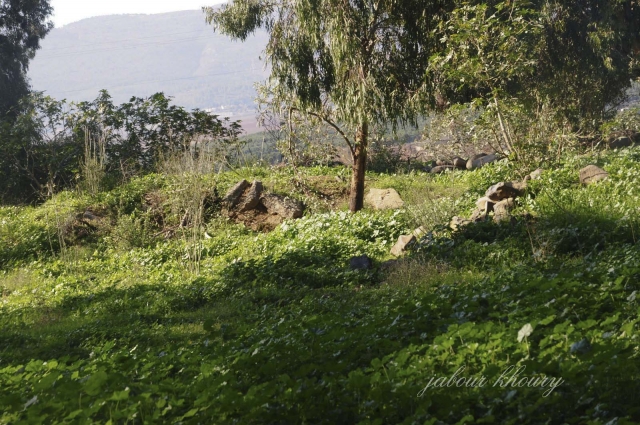Info
District: Safed
Population 1948: 230
Occupation date: 01/05/1948
Jewish settlements on village/town land before 1948: None
Jewish settlements on village/town land after 1948: None
Background:
al-Shawka al-Talita Before 1948
The village stood on gently sloping hills in the northeast part of the al-Hula Plain, to the southwest of Tall al-Qadi. It was linked by a paved road to the nearby Jewish settlements of Dan and Dafna; the road led west to al-Khalisa, a village on the highway that led to Safad. Al-Shawka al-Tahta had a semicircular layout and its houses were clustered closely together. Its entire population was Muslim. A thick growth of natural vegetation flourished on the village’s northern side, thanks to a plentiful water supply provided by the perennial stream that flowed from Tall al-Qadi. Agriculture was both rainfed and irrigated from a number of springs; crops consisted mainly of grain and fruits. In 1944/45 a total of 140 dunuins was allocated to cereals; 1,845 dunums were irrigated or used for orchards. Archaeological sites near al-Shawka al-Tahta include Tall al-Qadi , to the northeast, and Khirbat al-Day’a to the south.
Occupation and Depopulation
Israeli sources report that the villagers of al-Shawka al-Tahta feared a Zionist attack and fled on 14 May 1948; the district capital, Safad, had been captured a few days earlier, which would have contributed to the villagers’ panic. Safad had been captured during Operation Yiftach (see Abil al-Qamh, Safad District), which aimed at occupying the eastern Galilee and uprooting its residents.
Israeli Settlements on Village Lands
Two Zionist settlements are very close to the village site. Dan , founded in 1939, is 2 km to the east, and Dafna, also established in 1939, is 1 km to the southeast. Neither settlement is on village land.
The Village Today
Nothing remains of al-Shawka al-Tahta. Stone rubble from destroyed houses is for the most part hidden under eucalyptus trees and wild grasses. A few cactuses grow on the site. The surrounding lands are used by Israelis both for farming and as pasture.
---------------------------
Source: al-Khalidi, Walid (ed.). All that remains: the Palestinian villages occupied and depopulated by Israel in 1948. Washington DC: 1992.


